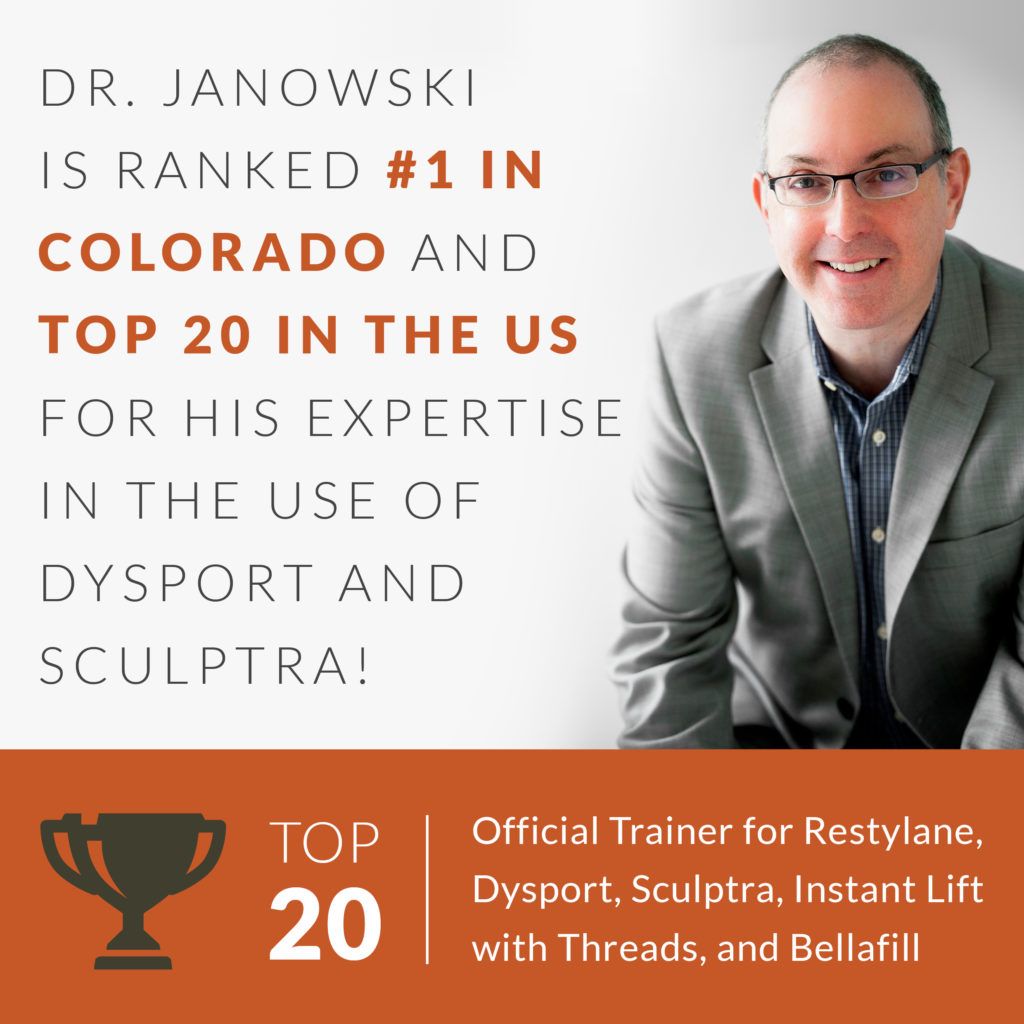Minimizing pain and anxiety from injectable fillers, neurotoxins, and liposuction
People often say “It hurts to be beautiful” – but this doesn’t have to be true! Fear of pain, and specifically fear of needles (also known as trypanophobia), is often cited as the #1 reason people choose not to get Botox, Fillers, or other aesthetic procedures like liposuction. The most common questions we get in our Broomfield, Colorado office are: “Does Botox hurt?”, “Do Fillers hurt?” or “I’m afraid of needles, how can I get over that?”.
First and foremost, your comfort is our priority. Our goal is for you to enjoy the process itself (almost) as much as you enjoy the results! If you are especially afraid of injections, or if you have any fears whatsoever, we can take extra steps to further minimize the possibility of pain.
You should know, too, that if you do suffer from trypanophobia, you are not alone. It is estimated 10% to 20% of the population has a debilitating fear of needles! Reasonable fear is not necessarily a bad thing, though. It can actually encourage you to be more careful about whom you choose for your aesthetic procedure – and to check their history, qualifications, and results.
We have specifically designed our office to be relaxing and comforting (like a spa) to help ease any anxiety you may have before or during your procedure. We also pride ourselves on continued education – learning and developing the newest and most advanced techniques for all of our aesthetic procedures. In addition to easing your fear before your procedure, we have a number of ways to ease anxiety and pain during the procedure:
- Pro Nox (nitrous oxide, or “laughing gas) – this is our newest addition, and we are very excited to offer it! This is essentially the same anesthesia you would get at the dentists office, but at a much lower concentration. It has been described as feeling like you’ve had a few glasses of wine, but it wears off very quickly so you can safely drive yourself home. We are one of the 1st med spas in the Denver / Broomfield area to offer this – and for most of our patients it makes a big difference!
- Dental Block – when doing procedures in or around the lips, I inject lidocaine in the mouth similar to a dentist. A pre-numbing gel is applied first before these injections. The numbing effect is immediate, and lasts about 30 minutes
- Local anesthetic – lidocaine can be injected at injection sites on the skin to provide immediate numbing, and to reduce bruising risk
- Topical anesthetic – We apply an anesthetic cream to the face 20-30 minutes before injections. This essentially numbs the skin, making you much more comfortable.
- Vibratory anesthesia – a vibration tool is applied to the face during injection to distract the patient and reduce pain sensation.
- Ice – ice can be applied to any area prior to, and after, injections.
- Lidocaine in filler – all commercial fillers are prepared with lidocaine mixed in, or it can be added to the product prior to injection.
- Tumescent anesthesia – for advanced or invasive procedures, lidocaine is infiltrated underneath the skin
- The “Snap” Technique – in my many years injecting, I’ve found that patients find a quick insertion of any needle causes far less anxiety, and sometimes, the needle is not even felt by patients. I like to use what I call a “snap” technique, which helps me deliver the gentlest injections possible
- Steroid injection – while not a pain control measure, if it appears that you might swell, we can inject a steroid that should greatly minimize swelling.
Needles used for neurotoxins like Botox, Dysport, and Xeomin are extremely small, much smaller than the needle used for a flu shot for example. That doesn’t mean it won’t hurt at all, but it means the pain will be minimized compared to an immunization or a flu shot. On request, we can ice the injection sites beforehand, which helps numb your soon-to-be-wrinkle free zones. We can also use a topical anesthetic cream which will further numb the affected area. (Also, if you are in a hurry and have no fear of needles, please let us know that too, we can also proceed without such preventive measures, and the pain is still likely to be very very minimal.)
Fillers like Restylane, Radiesse and Sculptra also use a very small needle. However, for fillers, more fluid is usually injected under the skin’s surface. For this reason, fillers come with Lidocaine which helps numb the injection site. Also, we can use a topical numbing cream and/or ice to further reduce the likelihood of pain and swelling.
If you are squeamish about injections, we highly recommend you let us know before your visit (remember you are not alone). Start with Dysport or Xeomin, as it’s the least invasive. And be sure to work with an experienced doctor! Dr. Janowski has perfected his methodology over the last 20+ years and has given literally thousands of injections. At Sonata, only Dr. Janowski performs injections, so you will always get the best, most-experienced injector, and therefore, expert treatment.
Whatever you do, please don’t put off getting Dysport or fillers because of needle-related anxiety. We all deserve a more healthy and youthful appearance! The team at Sonata in Broomfield and Denver has the experience and care to help you overcome your fears, and become a more beautiful glowing you.

*Results may vary from patient to patient
